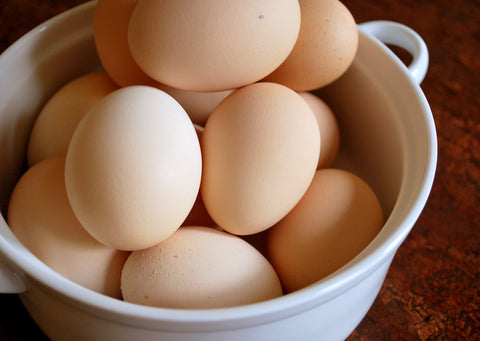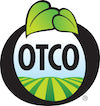
If you spent a lot of time on the couch in your teens and twenties instead of exercising, it may spell trouble later in life with cognitive function, increasing the risk of Alzheimer’s disease, finds new research.
As we age, we tend to get more concerned about our health, often adopting regular fitness routines by our thirties or forties. But what about those blissful days of our youth? Can we really afford to waste them lazing away?
New research suggests no. “Even early and mid-adulthood may be critical periods for promotion of physical activity” in order to help keep our brains sharp well into old age said lead researcher Tina Hoang in a news release from the Alzheimer’s Association.
While previous research points to the benefits of exercise later in life to ward off mental decline and dementia-related to Alzheimer’s disease, this new research says the effects of exercise in early adulthood later in life aren’t as well understood.
The new research looked at more than 3,200 adults between the ages of 18 to 30, specifically their activity levels and their television viewing habits over a 25-year period.
The researchers found that people who had long-term low physical activity and those who had long-term high television viewing patterns scored worse on the cognitive tests than those who were more active and viewed television less frequently.
While the researchers say they couldn’t prove cause-and-effect, the did note that “sedentary behaviors, like TV viewing, could be especially relevant for future generations of adults due to the growing use of screen-based technologies.” And, Hoang added that, “because research indicates that Alzheimer’s and other dementias develop over several decades, increasing physical activity and reducing sedentary behavior beginning in early adulthood may have a significant public health impact.”
Experts say the results aren’t surprising and that developing physical fitness habits at an early age can ensure healthier habits well into adulthood.
Image: rebeccahidalgo

How much you exercise may help to reduce your risk of developing cancer, and now there’s a significant number: 5 hours per week.
While more than 100 studies have already shown a connection between physical activity and lowering the risk of breast cancer, this new research looked at the long-term impact more frequent exercise has on the risk.
Leading the research was Christine Friedenreich, scientific leader of cancer epidemiology and prevention research at Alberta Health Services. Friedenreich and her team looked at the common recommendation of 150 minutes of exercise per week to reduce the cancer risk, and doubled it, seeing what would happen to women who exercised 5 hours (300 minutes) per week.
Published in the journal JAMA Oncology, Friedenreich found that of the 384 non-active women past menopause of varying weights, “those women randomly assigned to exercise for 300 minutes a week over the year-long study lost more body fat than those who were active for 150 minutes each week,” reports Time Magazine. “The women didn’t change their diet or any other aspect of their lives; they just exercised their allotted amount, by walking, running, cycling or using an elliptical machine or treadmill.”
Those women shed about 2.2 pounds more body fat than the less active group, losing abdominal fat in particular, with a larger dip in the waist to hip ratio.
While the overall weight loss was about the same between the two groups, the findings suggest that the more physical activity poses significant benefits for reducing the cancer risk.
“[F]or cancer prevention, we may need to exercise at higher volumes,” says Friedenreich. “So yes, doing 150 minutes of activity a week is good, but if you can do more, then from a cancer prevention perspective, 300 minutes is better.”
Fatty tissue serves of the primary source for hormones connected with post-menopausal breast cancer and also works to regulate the body’s immune and inflammatory responses.
“I’m sure that doctors are advising their patients to be more physically active to prevent heart disease or diabetes,” says Friedenreich. “So we’d like to add cancer to that list of chronic diseases that exercise can potentially prevent or help to lower the risk.”
image: plantronicsgermany

Some proteins really are better than others. When looking for the best protein sources, these foods are your best bet:
1. Eggs: The egg is experiencing a renaissance these days, especially with so many small-scale farms in operation delivering healthy, clean egg products. One medium-sized egg can contain six grams of protein and all 20 amino acids in a truly digestible form. The egg is quick and versatile too, giving you so many ways to enjoy this food.
2. Nuts: Also back on the “it’s actually good for you” menu are nuts of all kinds. They’re full of healthy saturated fats and they also pack in the protein, with a one-cup serving of most nuts providing about five grams of protein. They too are versatile and so delicious!
3. Clean Protein Powders: While many protein powders on the market are loaded with hard-to-pronounce ingredients that hardly do anything good for your body, clean proteins like our mustHave protein made from small-batch organic whey are incredibly body friendly. Whey is easily digestible and filled with pure dairy protein from organically raised cows. When looking for protein powders, look for organic single or low-ingredient proteins such as pure hemp seed protein or pea protein to ensure a high quality digestible product.
4. Whole grains: You really can’t go wrong with whole grains like barley, kamut, quinoa or brown rice. Even whole wheat offers a hefty serving of protein. Another bonus: whole grains are also loaded with amino acids and fiber, making them an excellent diet addition.
5. Lean Meats and Fish: When shopping for animal products, you always want to look for pasture-raised and grass-fed organic meat and chicken to ensure a high quality product. For fish, look for wild-caught animals that weren’t raised on fish farm pellet diets.
6. Beans: Like whole grains and nuts, the mighty bean does double duty as a high-quality protein source and an important fiber-rich food. Beans can be prepared so many ways in so many different cuisine styles. You’ll never get bored! Skip the canned beans though and opt for whole dried beans. Soak them in water overnight before cooking.
7. Yogurt: When it comes to dairy products, not all are created equal. But yogurt can contain a good amount of protein especially because it combines casein and whey. Look for organic Greek style yogurts and avoid those excessively sweetened.
Image: briannalehman

This week, the House of Representatives will vote on legislation that would prevent sates from labeling genetically modified foods (H.R. 1599). Better known as the DARK Act (Deny Americans the Right to Know), if passed, the legislation would also restrict the Food and Drug Administration’s ability to mandate a national labeling program for genetically modified foods—something 64 countries already do.
The bill has already passed through a House committee, even though it’s the source of widespread opposition, particularly among Democrats and consumer advocacy groups.
"Consumers increasingly want to know more about where their food comes from and how it is produced," Rep. Collin Peterson of Minnesota, the top Democrat on the House Agriculture Committee, told USA Today about the voluntary approach. This bill "satisfies that demand while also recognizing what we know about the safety of the food that our farmers produce."
If passed, the House bill would allow companies to instead label their products as GMO-free if they qualify, by applying to the Agriculture Department, which is now offering a certification process similar to the popular "USDA organic" labeling initiative. “The Food and Drug Administration would then review the safety of a product before it enters the marketplace, putting into law a process that is currently voluntary but widely used by food companies,” reports USA Today.
But that’s not enough to satisfy public safety groups or concerned consumers who insist a right to know is critical. "It doesn't matter if you think GMOs are terrific or whether you hate them, I think we all should be able to agree that the American people ought to get what they want, to know what is in their food," said Rep. Jim McGovern, D-Mass. "It makes me nervous when I hear from some in the industry who keep pushing back against labeling. It's like, what are they trying to hide?"

We need protein? But how much protein is ideal?
If you’re like most people, you may glance at the nutrition profile of your food before consuming it, but you probably don’t bring a calculator to every meal negotiating not only your total calories, but the micro- and macro-nutrients present in each meal.
Among the more critical macronutrients in our diet is protein. It’s the building blocks of our bodies, quite literally. Protein makes our bones, our hair, blood, connective tissue, enzymes, antibodies and more.
Throughout our lives, we’ll need different amounts of protein. And lifestyle can impact that too—if you’re a serious athlete, you may need even more protein than usual, especially if you’re training, say for a triathlon. But generally speaking the Recommended Dietary Allowance (RDA) for protein is 0.8 grams of protein per kilogram of body weight. For the average-sized adult, that’s anywhere from 50-60 grams of protein per day.
Of course, as our bodies are not just numbers on a scale, protein intake isn’t just a matter of measuring the right amount. In fact, according to Harvard University, some science suggests we may need even double the RDA. “Based on the totality of the research presented [at The Protein Summit]…taking in up to twice the RDA of protein ‘is a safe and good range to aim for. ’This equates roughly to 15% to 25% of total daily calories, although it could be above or below this range depending on your age, sex, and activity level.”
Some diets like the paleo diet adhere to high levels of protein and fat while strictly limiting carbohydrates. And experts warn that increasing protein doesn’t equate to more burgers or bacon. While animal products are a primary source of protein, many plant foods contain healthy proteins too: think beans, whole grains, nuts, seeds, vegetables, and even some fruits, such as the avocado.
The one key to protein intake all experts agree on is making sure it’s quality food sources—whole foods, not processed junk foods. If your diet is well balanced with a focus on whole foods, you’ll feel good enough to know that your diet isn’t lacking in anything.
image: sombilon photo

While a number of reports exist showing parallels between untamed climate change and a rise in human illnesses from asthma to cancer, new data may point to increased health risks as a result of a warming planet.
According to a White House report, not only are conditions like asthma expected to increase, and so are common allergies such as hayfever. Once a seasonal irritant, hayfever could affect people nearly year-round as the planet warms.
And there are other threats too to be dealt with including heat-related deaths and insects carrying diseases that were once restricted to tropical regions.
According to the New York Times, two peer-reviewed British journals — Philosophical Transactions B andThe Lancet — have “dedicated many pages to the topic [of climate change’s impact on human health] this year. Europeans, unburdened by the level of political controversy over climate change in the United States, often give more conclusive interpretations of the science.”
“We are in a far more certain place now,” said Nick Watts of the University College London Institute for Global Health and a co-author of the Lancet analysis. “We feel very comfortable talking about direct effects of climate change on health.”
While the climate’s effect on health is “generally less pronounced in wealthier countries like the United States,” reports the Times, “where so many people are protected from the elements in their homes.” But a recent study out of study comparing Laredo, Tex., found that just across the border in Mexico the incidence of dengue fever was “far higher…even though the mosquitoes that carry it were more abundant in Texas,” notes the Times. “Researchers attributed the Texan advantage to economics — air conditioning and windows that shut — not climate.”
But climate change is taking its toll in developed nations, and with serious consequences like the tick outbreak in Canada that has exploded in recent years. “Researchers have found that some areas have become warmer, and thus more suitable for ticks,” reports the Times. “Warmer weather allows more immature ticks to survive into adulthood, expanding the population.”
One thing climate scientists do agree on is that if we wait for more data on the impact of climate change on human health, it may be too late to take action—another reason to support efforts to stop climate change in its tracks.
image: nattu

Age, as the saying goes, ain’t nothing but a number. And that might be truer now than previously thought. According to a fitness-age calculator, which claims it can determine your true age by how physically fit you are, your fitness age may be more telling than your actual chronological age.
The fitness age calculator has been around for a few years, but it was recently put to the test by researchers at the Norwegian University of Science and Technology. The researchers used the calculator at the National Senior Games, an annual fitness event with more than 12,000 athletes all over age 50.
According to the researchers, while the average chronological age was an impressive 68, their average fitness age was even more impressive: 43.
So, how does it work?
The fitness age calculator takes information about where you live, when you were born, your exercise habits, heart rate, along with your waist size compared to your height.
“Then, using these variables, the calculator comes up with something called your VO2max, a measure of how much oxygen your body can take in, measured in milliliters of O2 per kilogram of body weight per minute,” reports Business Insider. “While your VO2max is influenced by your age and gender, it's largely determined by your workout regimen — generally speaking, the more you exercise, the more oxygen your body can absorb.”
While the calculator is not foolproof—you still need to live a healthy lifestyle and take precautions based on your actual age (like age-appropriate cancer screenings), it does offer some insights, particularly to the benefit of maintaining a healthy weight and a regular fitness routine.
The calculator is easy to use. As a test, we entered our real data: Age 43, exercising for at least one hour 3-4 times per week and a healthy weight and waist size. The calculator returned a fitness age of under 20 years old. We’ll take it! But compare it to what Lydia Ramsey entered for her story in Business Insider: The 22-year-old added 70 pounds to her real weight and ten inches to her waist, “Surprisingly, my fitness age changed to 36,” she noted. Whether or not the calculator can effectively predict your “age” it certainly can give you reason to get in shape or stick to your fitness routine at any age.
Want to test your fitness age? Check out the calculator here.
Image: funkz

Chemicals found in a number of household products including plastic wrap, food containers, soap and cosmetics may cause serious health issues for children, new research finds.
The chemicals — diisononyl phthalate (DINP) and diisodecyl phthalate (DIDP) — have been considered safe and actually used as replacements for more harmful chemicals.
But according to the research, published in the current issue of the journal Hypertension, these two chemicals may cause high blood pressure and metabolic issues in children.
"Our research adds to growing concerns that environmental chemicals might be independent contributors to insulin resistance, elevated blood pressure and other metabolic disorders," study author Dr. Leonardo Trasande, a professor at NYU Langone Medical Center, said in a statement.
The researchers looked at the blood pressure and levels of DINP and DIDP in the urine of more than 1,300 children ages 8 to 19. The researchers noted thawith every 10-fold increase in the levels of the two chemicals, “the children's blood pressure was about 1 point higher, on average,” reports LiveScience. It’s a small amount, but the researchers noted it is significant for the population at large.
The researchers also conducted another study, with the findings published in May in the Journal of Clinical Endocrinology and Metabolism. This research looked at more than 350 children ages 12 to 19 and the effects of the chemicals on insulin resistance, which can be an indicator of an increased risk for developing type 2 diabetes. That study noted increased levels of chemicals in urine were associated with insulin resistance compared with the teens who had the lowest levels of the chemicals in their urine.
“Exactly how the two chemicals might be linked with health problems is not clear, but previous research on other phthalates has shown that these chemicals might change the expression of genes that are important for lipid and carbohydrate metabolism, which may play a role in blood pressure regulation and insulin resistance,” reports Live Science.
Image: dneff

There are already reasons enough to avoid processed junk food high in fats and sugar, but a new study conducted by researchers at Oregon State University found that high-fat and high-sugar diets might also be doing great harm to cognitive function in addition to the damage they cause to physical health.
Published in the journal Neuroscience, the study looked at the mental performance of mice who consumed varying levels of fat and sugar. The researchers also looked at gut bacteria in the mice.
“Bacteria can release compounds that act as neurotransmitters, stimulate sensory nerves or the immune system, and affect a wide range of biological functions,” Kathy Magnusson, a professor in the OSU College of Veterinary Medicine and principal investigator with the Linus Pauling Institute, said in a statement.
According to the researchers, both the mental and physical performances of the mice who were eating the highest fat and sugar diets were compromised. “One of the most disparate physiological factors within the groups of mice, and the suspected reason for the decreased brain function, was gut bacteria,” reports TakePart.
While we now know that high-fat and high-sugar foods can lead to weight gain and diet-related illnesses such as type 2 diabetes and heart disease, science is just beginning to understand the relationship gut bacteria play in our overall health, particularly mental health. Recent research has linked fermented foods that contain naturally occurring probiotics to lower levels of anxiety and other mental health benefits. And this new study shows how gut bacteria may be negatively impacted by a diet high in refined sugars and processed fats.
“This work suggests that fat and sugar are altering your healthy bacterial systems, and that’s one of the reasons those foods aren’t good for you.” Magnusson said. “It’s not just the food that could be influencing your brain but an interaction between the food and microbial changes.”
image via Maurice Svay

If there’s one dessert that screams summer, it’s key lime pie. The tartness and sweetness practically melt in your mouth with a light goodness that’s truly sublime! This key lime pie recipe gets a few health boosts.
First, there is no refined sugar in the recipe, making it a much healthier dessert than most. It also uses cashews and avocados for the filling, giving it a light and fluffy feel with the bonus of healthy plant fats.
Plus, this recipe also calls on organic greens powder, which not only enhance that gorgeous green color we love, but it also delivers a healthy nutritional boost of vitamins, minerals and antioxidants. You can use a blended greens powder (like our mustHave greens), or choose your favorite single-ingredient or greens powder blend.
You can even take this recipe a step further by making your own nut-based crust, or you can use a traditional pie-crust recipe.
Makes one 12-inch pie
Ingredients
1 1/2 cups cashews (soaked for one hour in enough water to completely cover the nuts)
2 just-ripe avocados
1.1/4 cups lime juice
2 limes, zested
3/4 cup honey or maple syrup
2 tablespoons coconut water or nondairy milk
1/4 cup and 2 tablespoons of coconut oil/butter
3 tablespoons vanilla extract
1/2 teaspoon organic greens powder
1/4 teaspoon sea salt
*one lime sliced for garnish
Directions
Place everything into a high-speed blender or food processor and blend until creamy, careful not to blend to the point of creating heat in the machine.
Gently pour the filling into your prepared pie crust and place into your freezer to set for three hours.
Transfer the cooled pie to the refrigerator until serving. Top with fresh coconut whipped cream and twist lime slices onto the top for decoration.
Image: mealmakeovermoms


